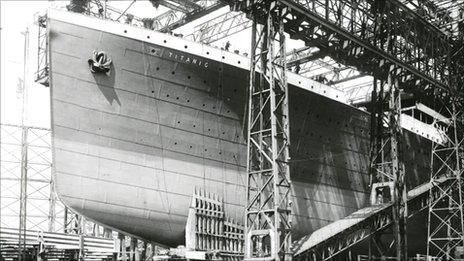We Are Stoke-on-Trent: What links the Titanic and oatcakes?
- Published
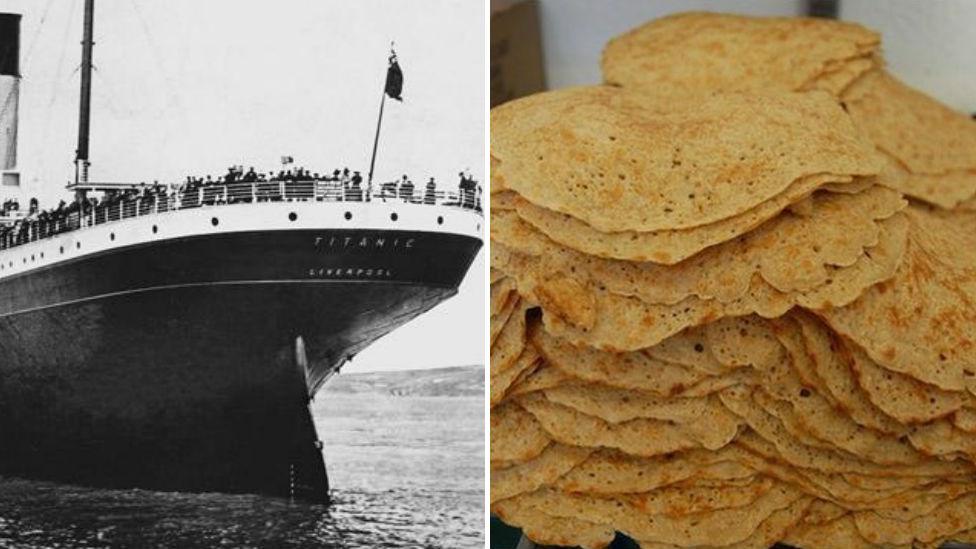
What do the Titanic and oatcakes have in common?
The captain of the Titanic was from Stoke-on-Trent, a city of six towns where the local delicacy is the oatcake. As part of our We Are Stoke-on-Trent project, our readers have asked us to tell them more about Edward Smith, the city federation and a pancake-like treat with fans across the world.
'The millionaire's captain'
Captain Smith was filmed inspecting the Olympic before it sailed
Reader Samantha Brown got in touch to ask us to tell the story of the Titanic's captain, Edward John Smith, who was born in Well Street in Hanley in 1850.
The son of a pottery presser and a grocer, Smith attended Etruria British School before starting work at age 12 at the Etruria Forge, where he operated a steam hammer.
A few years later, he went to Liverpool to follow in the footsteps of his half-brother Joseph, who was in the Merchant Navy, and was apprenticed as an ordinary sailor.
By the age of 25 he had passed his master's certificate of competency to command a vessel and by 1880 had joined the White Star Line where he rose through the ranks to captain some of the biggest ships of the day.
He married Sarah Eleanor Pennington, a farmer's daughter, in 1887, and their only child, Helen Melville Smith, was born in 1898.
More from the We Are Stoke-on-Trent project:
Smith told a New York Times reporter in 1907 he had "never experienced any problems at sea". That same year, White Star revealed plans to build three new ships - the Olympic, the Titanic and the Gigantic.
The Olympic went into service in 1911 and was captained by Smith, who now held the rank of commander.
By this point, he had become known as the "millionaire's captain", the number one choice for the aristocrats of the time - many of whom chose to sail with him because of his reputation for safety and affability.
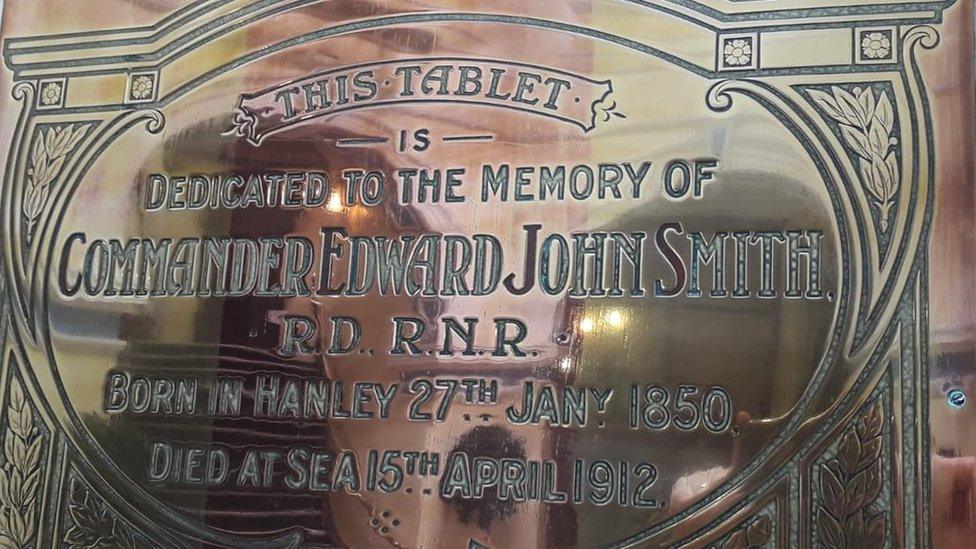
A plaque to Smith was installed at Hanley Town Hall
In April 1912, while the Olympic was in for repairs, he took command of the supposedly "unsinkable" RMS Titanic for its maiden transatlantic voyage from Southampton to New York. When it departed, the ship was carrying 885 crew members and 1,316 passengers.
Smith was awoken about 20 minutes before midnight on 14 April after the ship hit an iceberg.
The liner sank less than three hours later at about 02:20. About 1,500 people perished, including Smith who went down with his ship.
A number of different accounts emerged about what the captain's last movements were, with one version that he dived into the sea as the bridge of the ship went under.
The British inquiry into what happened found that Smith had ordered the ship to travel too fast and that the lifeboats had not been filled before being lowered, but it was made clear that "negligence cannot be said to have had any part".
Smith's portrait was hung in his former school in 1913 and later a plaque was installed in Hanley Town Hall, while a further plaque was installed at his former home in 2012 to mark 100 years since the ship's sinking.
A bronze statue of him stands in Lichfield's Beacon Park in south Staffordshire.

A tale of six towns
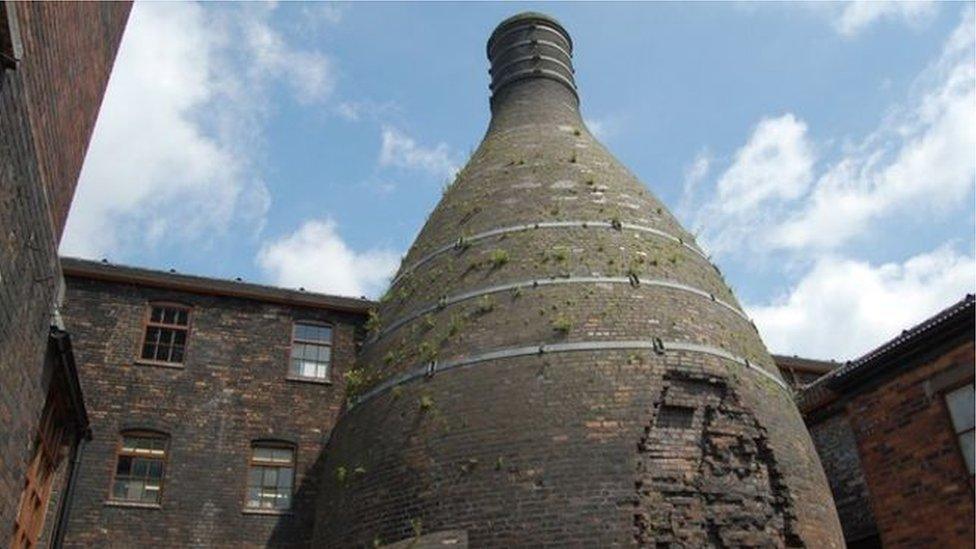
Stoke-on-Trent is known as The Potteries
Reader John Jones, 59, spent time in and around Staffordshire as a child and now lives on the Fylde coast in Lancashire.
He asked: "Stoke-on-Trent is a bit confusing as it is a combination of small towns. Hanley, Burslem, Fenton, Longton, Stoke and Tunstall. Why is Stoke made up like this?"
The idea of a federation came about in response to the need to share responsibility for things like public health, education and law and order, according to Stoke-on-Trent Live. , external
In 1888 an amendment was proposed to the Local Government Bill that would have made the six towns into districts within a county of "Staffordshire Potteries".
It was not until 1 April 1910 that the six towns were brought together, a spokeswoman for Stoke-on-Trent City Council said.
At the time, this federation of the Potteries towns was unique in local government terms and heralded the start of a new era, she said.
On 5 June 1925 King George V visited Stoke-on-Trent and gave it the status of city by royal letters patent, she said.

'Potteries poppadom'

Pancake-like oatcakes, such as these, are distinctive to Staffordshire
Several of our readers got in touch to ask us to shine a light on the Staffordshire oatcake.
This savoury snack is revered in its birthplace, and as far afield as Arizona.
The basic recipe reportedly goes back to the 17th Century and includes oatmeal, flour and yeast. They can be served sweet or savoury, with the most popular toppings including bacon, cheese and jam.
Local nicknames include Potteries poppadom, Tunstall tortilla and Clay suzette.
Oatcakes are so popular in Stoke-on-Trent that since 2010 there's even been a special Oatcake Day every year on 8 August.

This article was created as part of We are Stoke-on-Trent, a BBC project with the people of the city to tell us the stories which matter to them.

Follow BBC West Midlands on Facebook, external, on Twitter, external, and sign up for local news updates direct to your phone, external.
- Published28 September 2019

- Published25 July 2013

- Published22 September 2019

- Published22 April 2017

- Published15 April 2012
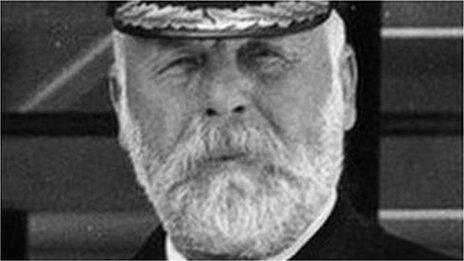
- Published12 April 2012
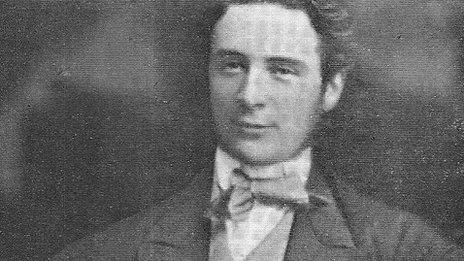
- Published26 August 2011
